Aquaponic systems are an efficient, no waste way to grow food. By combining fish with garden plants, you can reduce the amount of water used, eliminate the need for soil and fertilizers, and grow healthy plants and fish – right in your own home. An aquaponic system works by using the waste materials fish produce naturally as a nutrient-rich food for plants. The aquaponic fish and plants work in harmony, keeping the water clean and safe for the fish and allowing healthy plants to grow. By choosing organic fish foods, you can easily keep the entire system organic. Whether the fish, the plants, or both are your focus, an aquaponics system offers many benefits, including reducing the amount of water needed, saving time on tank cleanings, and removing the cost of fertilizers. To reap these benefits and start an aquaponics system, begin by determining which type of fish you want to use.
Best Fish for Aquaponics
Choosing the best fish for an aquaponic system involves considering many factors, including whether you want to grow fish for food, the degree of difficulty associated with growing the fish, the environment necessary to keep the fish healthy, and how easy it is for the fish to breed within the system. The best fish for aquaponics can be divided into two categories – edible fish and ornamental or non-edible fish.
Edible Aquaponic Fish
If you’re looking to grow fish you can eat, the best choices in aquaponic fish include:
• Tilapia – One of the easiest fish to care for, Tilapia makes an excellent choice for an aquaponic system. They are easy to breed, grow quickly, and can tolerate even poor water conditions. They grow quickly and produce plenty of waste material for the plants to use. The species is known to be very hardy and tolerates bacteria well. They are also fairly disease resistant. Tilapia requires a warm water environment, preferring temperatures over 72 degrees Fahrenheit so a heater may be necessary. They are an excellent fish for eating, boasting a high protein content and a low fish flavor, making them excellent for those who are not fond of eating fish.
• Catfish – There are a variety of species of catfish that can be used in an aquaponic system, but all species work well. They are fast growing and produce a good deal of waste without requiring overfeeding, making them ideal for growing a lot of plants or for plant varieties that require a high level of nutrients to thrive. The proper food and water temperature will vary somewhat depending on the species you use. Catfish generally prefer warmer water environments and may require a heater, especially in colder climates. Cool water species are available, however. Many people enjoy eating catfish, and they are high in vitamin D and protein.
• Bluegill – Another excellent choice for an aquaponic system are Bluegill. This fish species is extremely tolerant and can adapt to almost any water temperature or size of tank. They tolerate bacteria and resist disease well too. Bluegill may be one of the most inexpensive options as they do not require a heater or specialized diet. Breeding can be tricky, however, as the adults will often eat their young. A separate tank may be required for the hatchlings to protect them until they reach a suitable size to be reintroduced into the system with the adults. They are an excellent source of protein and iron, making them a healthy food choice.
Ornamental Aquaponic Fish
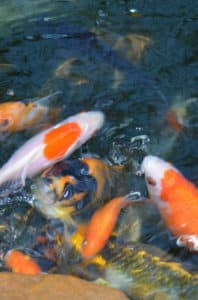
• Koi – An excellent choice for aquaponics, Koi can grow to a fairly large size, have a long lifespan, tolerate warm or cooler temperatures, and are very resistant to bacteria, parasites, and diseases. These beautiful fish are fun to watch and can grow to be almost friendly, approaching the sides of the tank or top of the water when you are near. They can eat various food types, including vegetation or smaller fish. When breeding, the young Koi may need to be separated from the adults as they could be eaten. They produce enough waste to support most plant varieties, and can be overfed to produce more if needed.
• Goldfish – Although they are not a very large ornamental fish, goldfish make an excellent choice because they can produce a large amount of waste especially if overfed. More waste means more nutrient-rich food for the plants. Their smaller size makes them ideal for smaller systems where larger varieties would face overcrowding. They are a relatively inexpensive choice as well. They do not require a specialized diet, do not require a heater, and can be purchased commercially almost anywhere. They are not as hardy as Koi but are still relatively easy to care for. Plant cover inside the tank is required for breeding to be successful
• Bloodfin Tetras – Another small, ornamental fish breed, Bloodfin Tetras are easy to care for and make for an attractive tank of fish. They can tolerate cold water environments and do not require a heater unless the tank is in a cold area. They make an excellent choice for smaller systems, but as the number of fish increase the tank size should as well. Tetras tend to be very active, and overcrowding could result in injury as the fish run into one another.

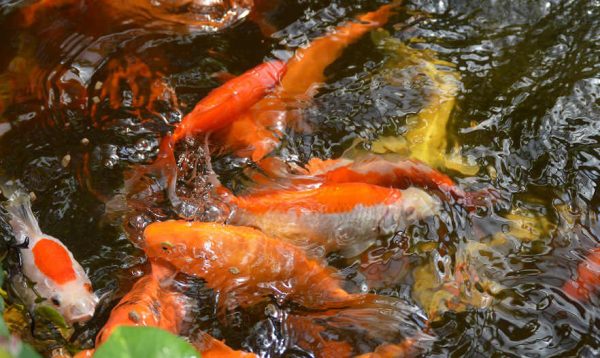





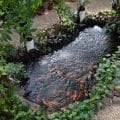
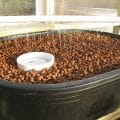

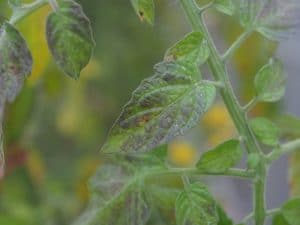
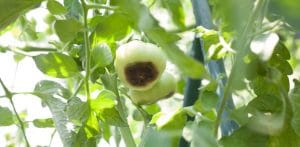
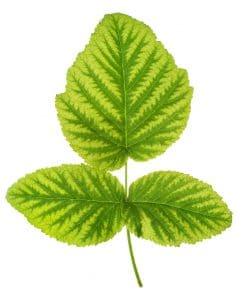
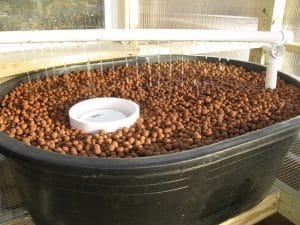
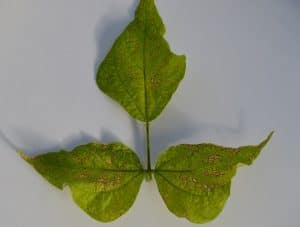
Leave A Comment